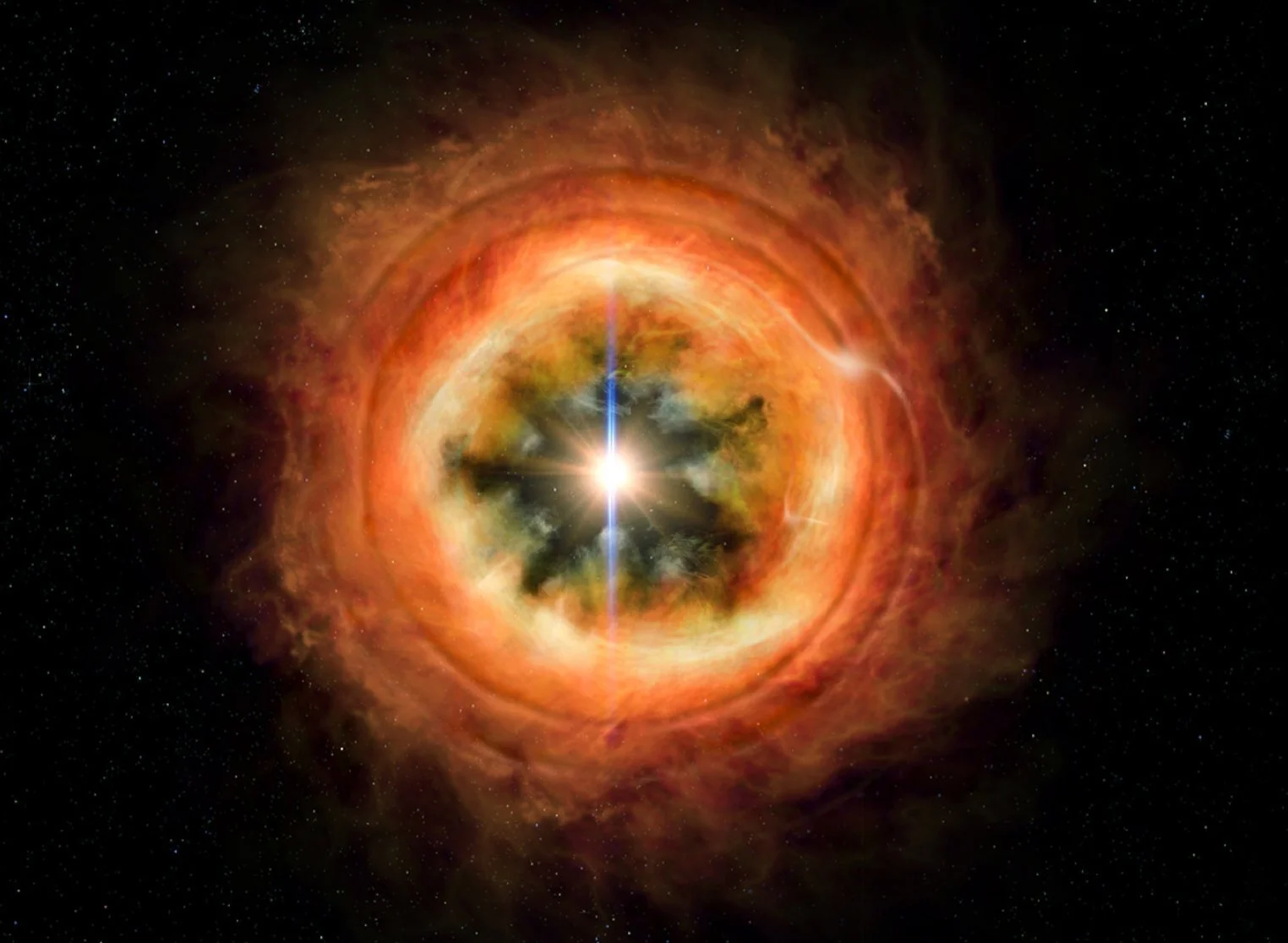Research
Credit: Hernán Cañellas
Magnetic fields in the protoplanetary disk
We do not completely understand how our solar system and other systems in the universe evolve during their first few million years. Constraining this can help us better understand, for example, how planets form.
During this time in the disk, magnetic fields seem to play a central role in the evolution of the system. My research focus on measuring magnetic fields recorded in meteorites to constrain what was the spatial and temporal evolution of magnetic fields in our solar system. This allows us to use our solar system as analogue to other systems in the universe.
I do this by conducting paleomagnetic measurements with meteorite samples ranging from a few mm all the way to ~100 µm inclusions.
Publications: Borlina+2021 (Sci. Adv.), Borlina+2022 (JGR: Planets).
Massive Speleothem at the Peruaçu National Park, Brazil. Myself for scale.
High-resolution magnetic records from continuous deposits
Continuous deposits, such as speleothems, can record magnetic fields in sub-annual timescales that can be used to understand how planetary magnetic fields are sustained and determine the properties of planetary interiors. Nonetheless, measuring continuous deposits with traditional paleomagnetic techniques requires large sample volumes that average hundreds of years of magnetic field variation. By using micro-paleomagnetism we can obtain high-resolution temporal records of short-term variations of Earth’s magnetic field to understand what is happening inside of Earth’s interior, search for potential correlations between magnetic and environmental changes, and use the Earth as an laboratory to understand planetary magnetism.
Publication: Borlina+ (in preparation)
The Pasteur Point and the evolution of life
Studies have shown that approximately 2 billion years ago there was a considerable increase in oxygen concentration in the Earth's atmosphere (i.e. Great Oxidation Event, GOE). The cause for this increase is still debated, however it is plausible to assume that evolution and development of life might have played an important role during this event. Motivated by this question, I seek to elucidate the transition between fermentation and respiration (two fundamental metabolic processes for life) which occurs at low oxygen concentrations. This will help better understand the GOE and learn how different types of life thrive at such conditions.
Publications: Pajusalu+2019 (PLOS ONE)
Dust in Owens Lake, California
Dust is one of the most common things on Earth. At Owens Lake, is no different and dust, an aerosol, is everywhere. Motivated by how aerosols interact with clouds (one of the largest sources of uncertainty in climate models) we have observed environmental data at Owens Lake since 2012. This project gave us an unique chance to not only better understand how dust is generated and how it impacts the rest of the state, but also how the most recent California drought has been impacting Owen Lake's dust production.
Publications: Borlina+2017 (Nature Scientific Reports)
Credit: ESO/L. Calçada
The formation of giant planets
Magnetic fields, produced in the interior of the planet or from the protoplanetary disk, are likely to be present during the formation of the giant planets. By including magnetic fields in the thermal and dynamical modeling of giant-planet formation we can obtain insights about these planets in our solar system and planetary systems elsewhere.
Publications: Borlina+2023 (LPSC).
Credit: Hernán Cañellas
The Hadean Earth
As we develop our understanding of the formation of the solar system, one question remains unknown: when did the Earth’s magnetic field originate? Understanding when the Earth’s magnetic field started can help us elucidate the conditions during the beginning and evolution of life, how Earth’s dynamo is generated and maintained through time, and how and when plate tectonics started.
Looking at the oldest evidences from the Hadean Earth we might be able to answer this question. Such evidences could be ingrained in minerals that formed sometime in the very early history of the Earth. An example are the Jack Hills zircons from Western Australia: these ~100 µm inclusions are the oldest known minerals.
In my work, we are trying to elucidate the early evolution of Earth’s magnetic field by measuring the paleomagnetism of such inclusions.
Publications: Fu+2021 (EPSL), Borlina+2020 (Sci. Adv.), Tang+2019 (PNAS), Weiss+2018 (Geology).
Credit: NASA/JPL-Caltech/U. of Arizona





